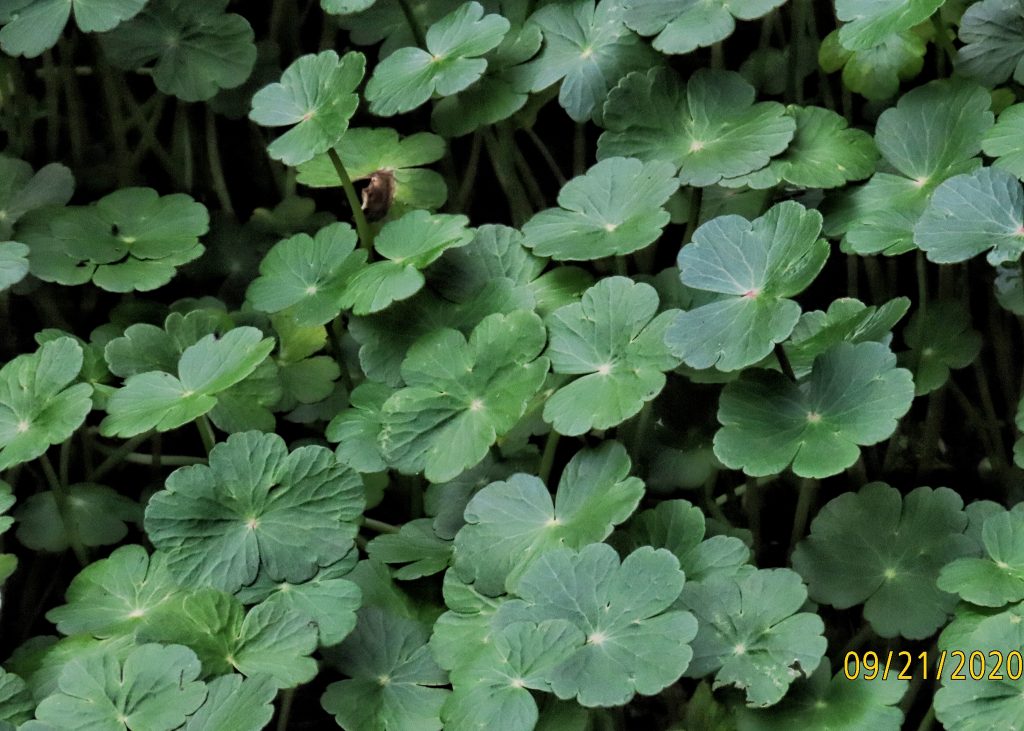
Floating Marsh Pennywort is a native, wetlands obligate plant, in the family Araliaceae. It forms dense mats on the waters edge and shorelines of slow and still bodies of water. The leaves are broad and fleshy which, along with the relative buoyancy of the stems, help the mats to suspend in shallow water.
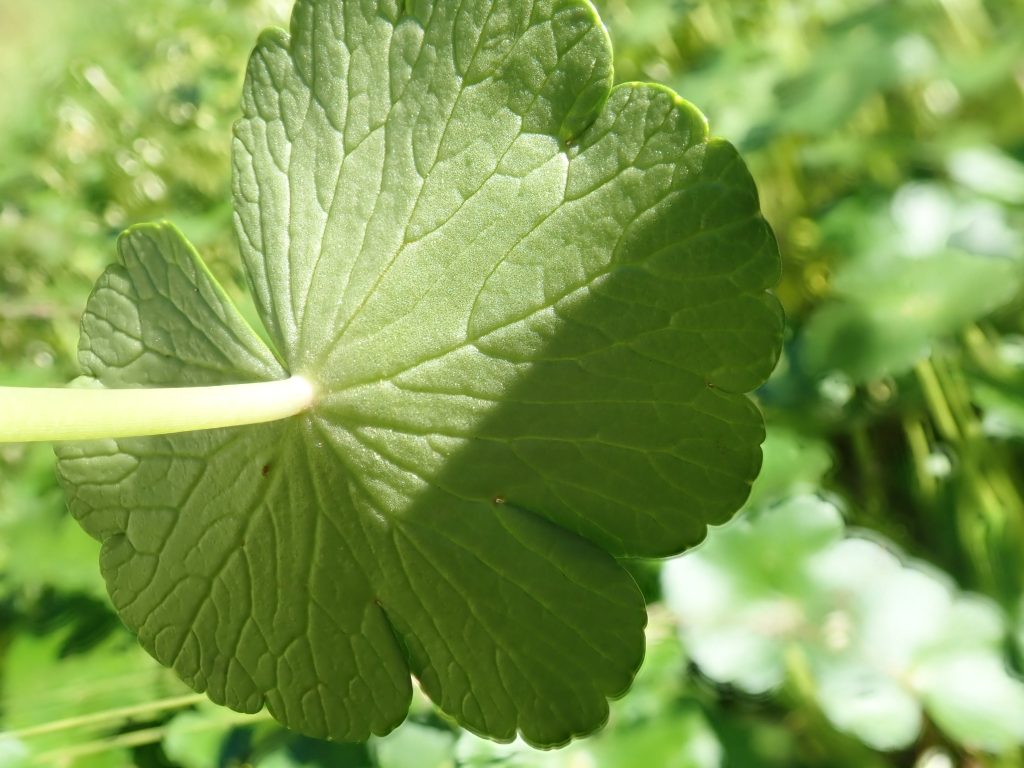
The silver dollar sized leaves are round to kidney shaped, slightly to greatly lobed at the margin and deeply lobed where the petiole attaches, making them heart-shaped (cordate). They are deep green on top and light green below. The flowers are cream to yellow, in small inflorescences below the leaves and just above the water.
The only plant this is likely to be confused with is Hydrocotyle verticillata, but the leaves of those plants are not cleft to the middle and the petiole attaches in the center of the leaf (peltate leaves).
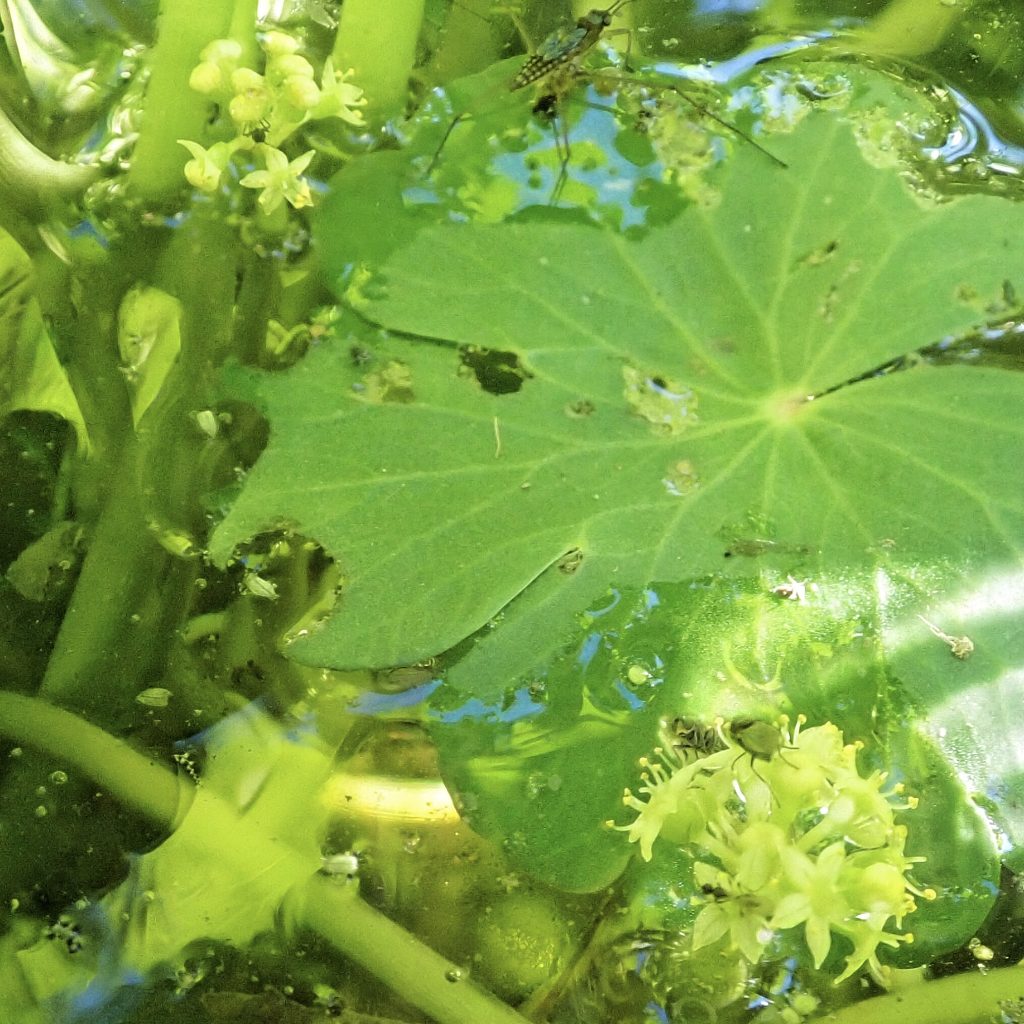
Though this is an endangered species in parts of its native range (but not in the PNW), in places where it has been introduced it is invasive and noxious. In Great Britain it is so invasive that it was the first plant ever banned from sale. The seeds float allowing this plant to spread widely along waterways.
Hydrocotyle comes from the Greek for water and flat cup, referring to the peltate leaves of many species in this genus. The species epithet ranunculoides (rana=frog, -oides=like) refers either to the shape of the leaves being like those of a Ranunculus sp, or to the leaves being frog-like sitting on and in the water.
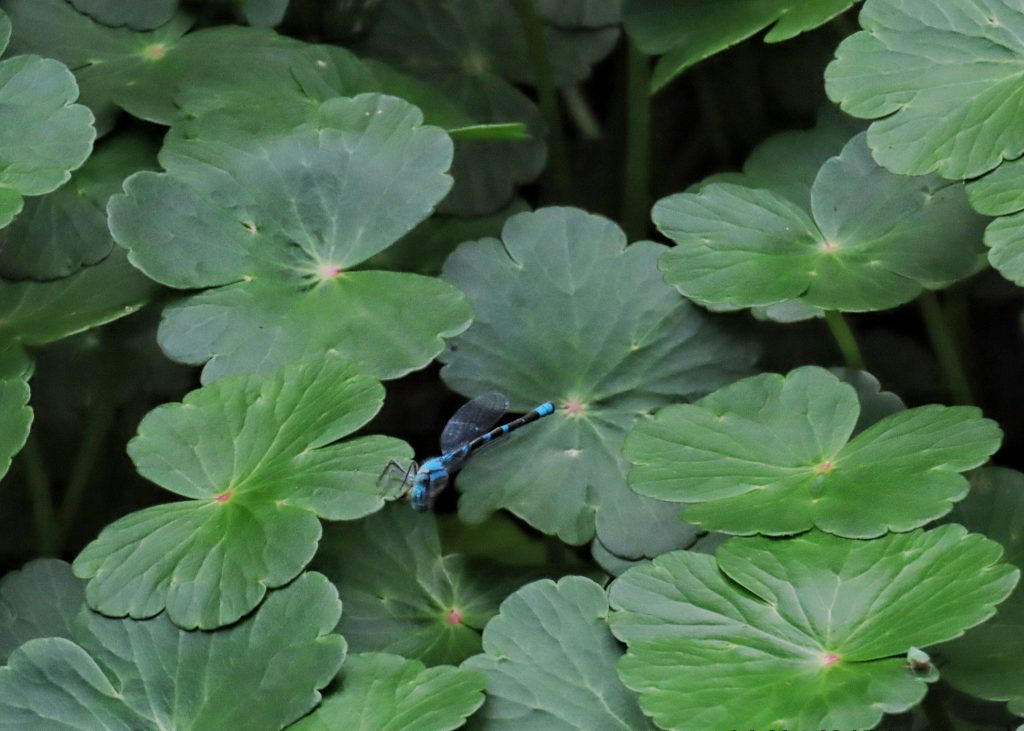
I can’t find records of insects that feed on Hydrocotyle ranunculoides, although there were many unidentified small green leafhoppers on the leaves, and freshwater snails on the submerged stems, but I couldn’t ascertain whether any of them were feeding on it. It is known to be a forage food for nutria, a South American rodent which has been introduced in the US. Hydrocotyle ranunculoides is native in the nutria’s home range.
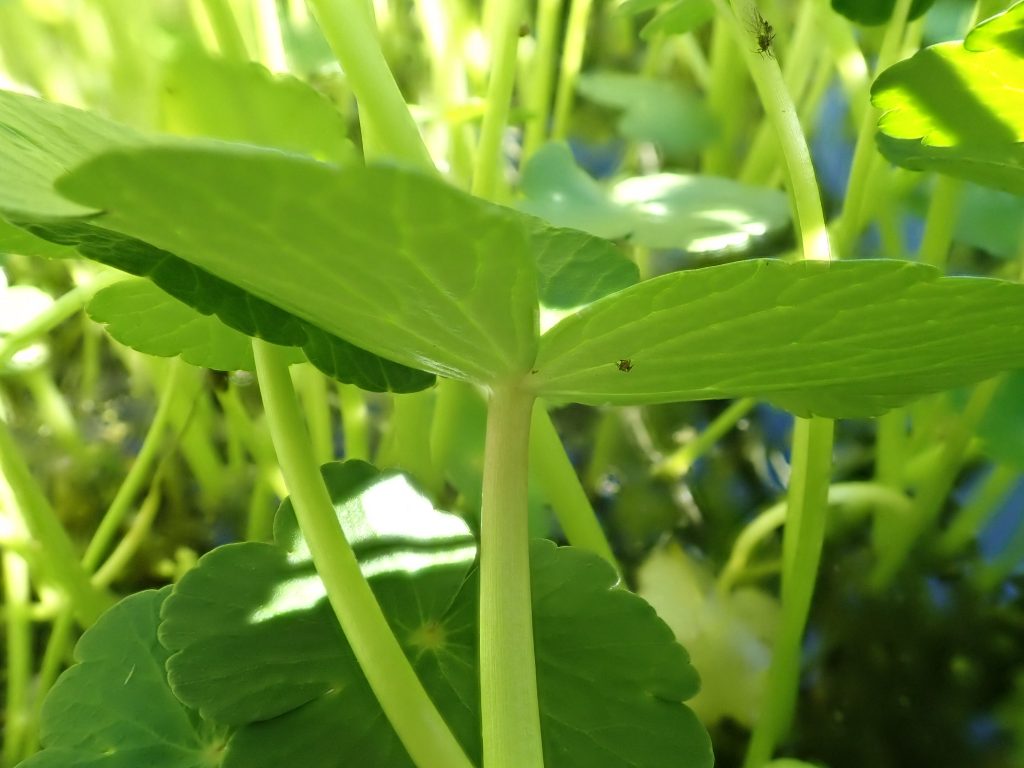
https://www.illinoiswildflowers.info/wetland/plants/wt_pennywort.htm
https://www.invasiveplantatlas.org/subject.html?sub=23098
Size- Up to a foot high on mud; usually only a few inches above the water surface when floating
Habitat- Wetlands obligate
Range- Sporadic, mostly west of the Cascades in our region
Blooms- Summer into fall
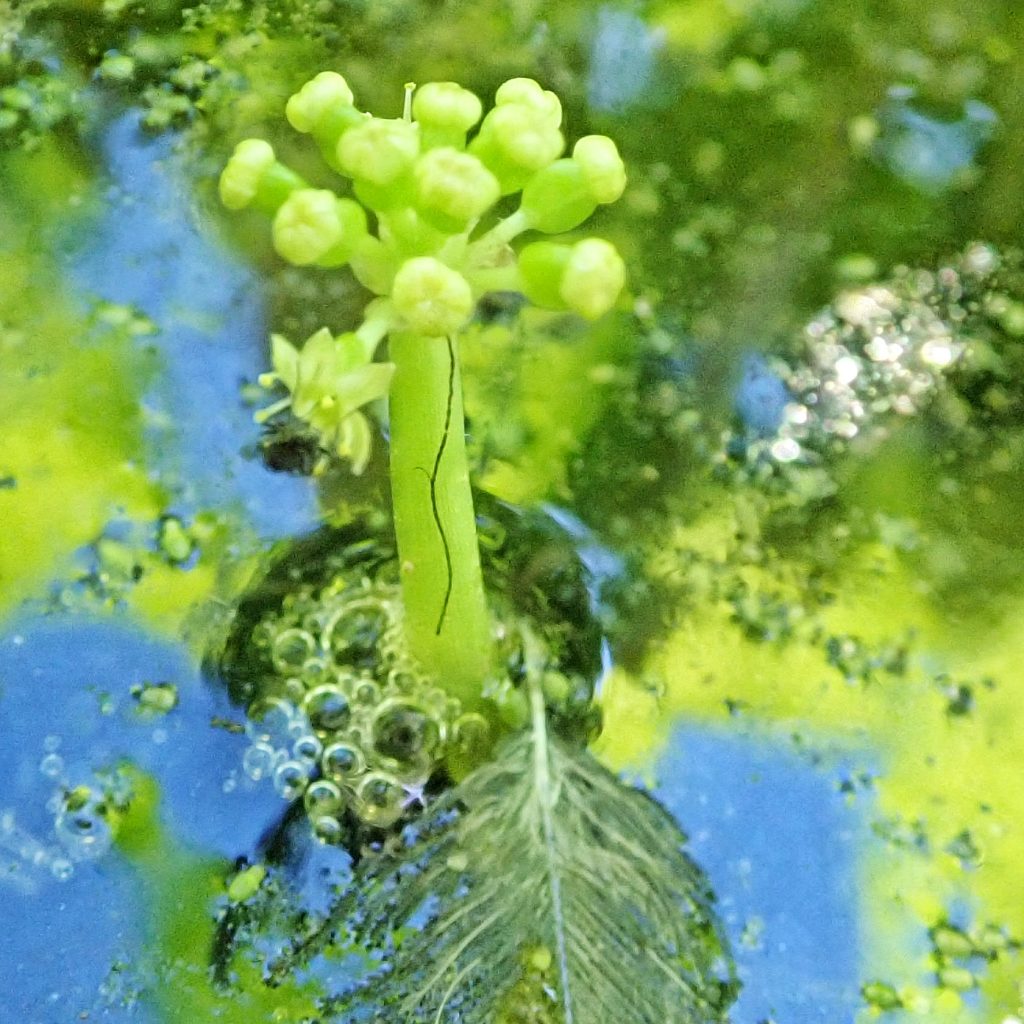
Very interesting & not “ranunculus ” at all! 😉
🤣😀😉